Japan
Space Workforce Trends in the United States, Europe, Japan, and India
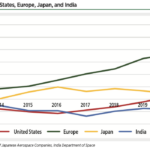
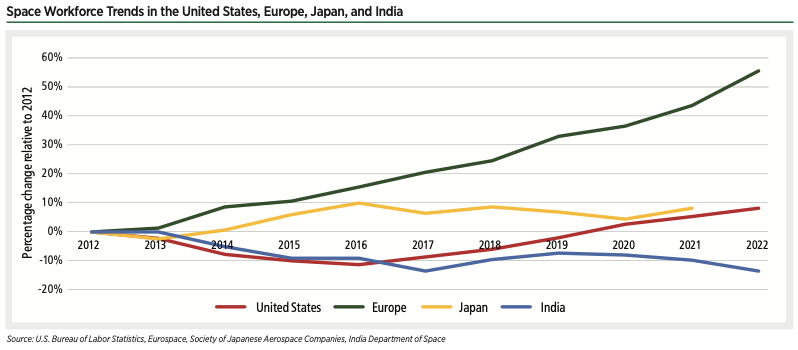
The United States, Europe, and Japan have all seen net growth in their space workforce over the past decade, with steady increases in Europe, and more varied trends in the United States and Japan.
European Nations Lead with Space Workforce Growth from 2021 to 2022
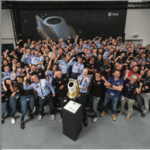
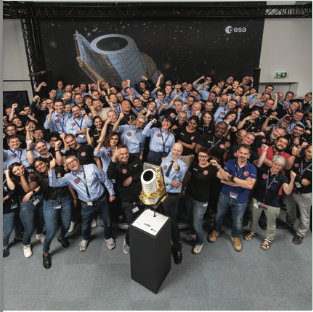
Trends in the size and composition of the global space workforce provide a lens into the health and trajectory of the industry. While many countries do not collect or release data on their space workforce, several major space actors, including the United States, Europe, Japan, and India, publish this information annually.
SNAPSHOT: Human Spaceflight
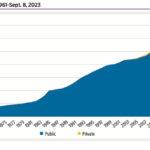
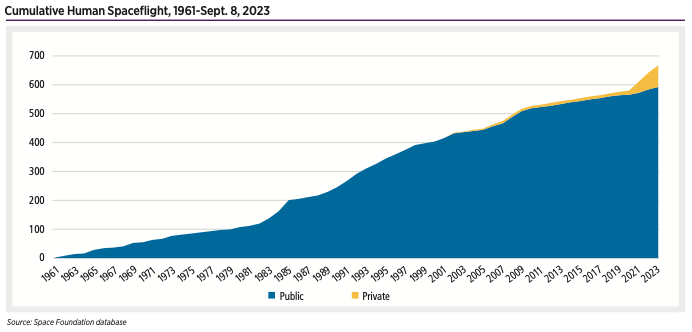
From the early days of the space race, sending humans to space has always been a key priority. The International Space Station (ISS) has maintained a continuous human presence in orbit for more than 20 years, and microgravity research on space stations has provided valuable insight for future long-term human missions in space.
Active Launch Vehicle Operators by Type, 2000-2022
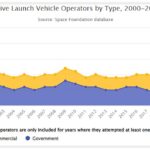
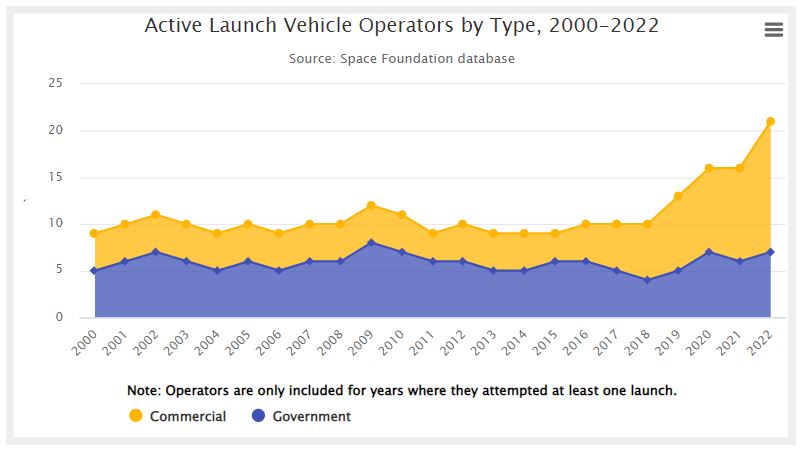
Orbital launch attempts have more than tripled since a lull in activity in the early 2000s bottomed out at 55 attempts in 2004. Part of the rapid growth in the past few years is due to a sharp increase in launch vehicle operators after a long period with an average just shy of 10 distinct operators per year.
Spaceport Development: Progress is Slow, but Global Interest is Strong
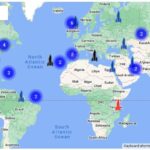
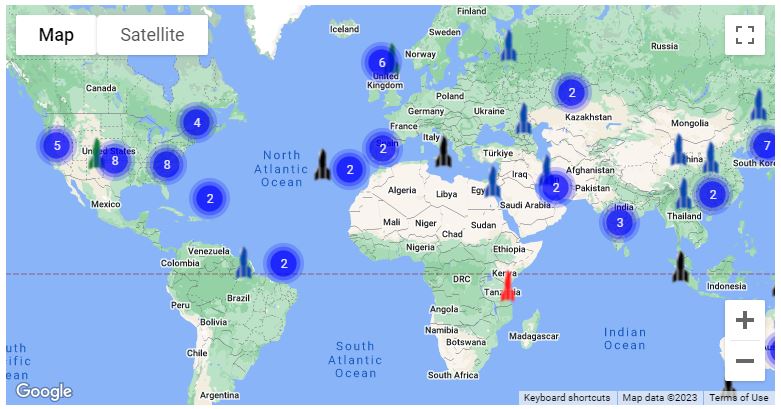
As the pace of small satellite development and global launches continues to accelerate, nations around the world are developing spaceport policies and courting launch providers and other space industries with the intent of expanding their access space.
Science and Engineering Degrees, in Thousands, 2000-2016
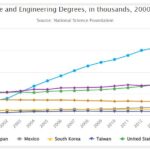
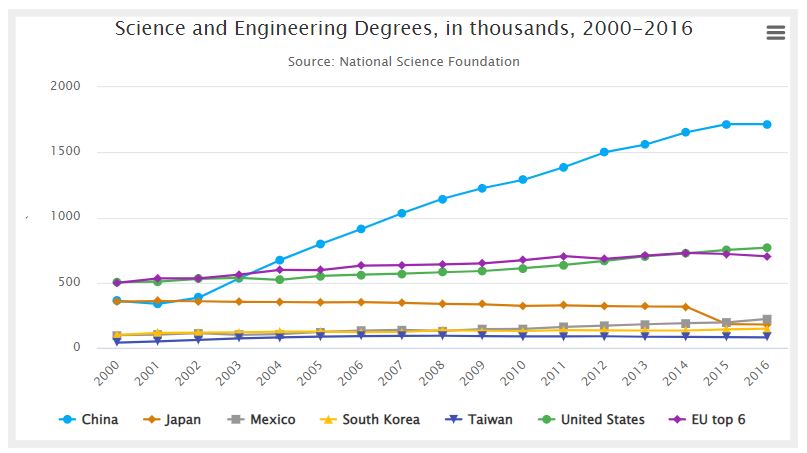
“Space education, research, and workforce development in the public and private sectors are core components of the U.S. national interest, with the potential to drive exploration and scientific discovery, to find new solutions for pressing challenges, including climate change, to strengthen American national security, and to provide good-paying jobs for Americans,” the roadmap document states.
Japanese Space Budget, 2005-2021
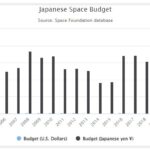
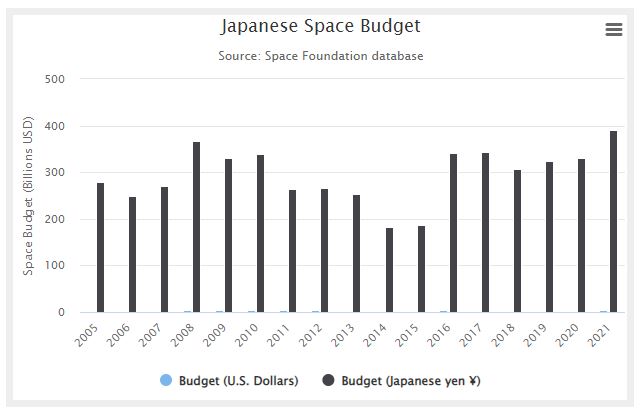
Civil space activities in Japan are coordinated by the Japan Aerospace Exploration Agency (JAXA), which is funded primarily through the Ministry for Education, Culture, Sports, Science, and Technology (MEXT).
Index Weight by Listing Country as of Dec. 16, 2022
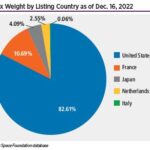
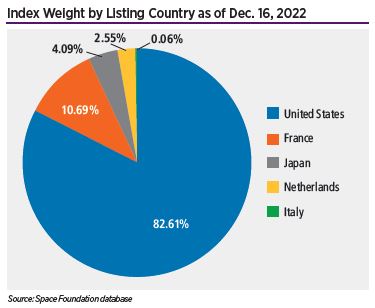
As of December, U.S.-listed companies comprised 82.61% of the weight of the overall index, with France in second place at 10.69%, Japan at 4.09%, the Netherlands at 2.55%, and Italy at 0.06%. Canada was no longer represented due to the removal of MDA, and Italy’s share dropped by a factor of 10 due to the removal of Avio.
Launch Attempts by Country and Mission Type, 2022
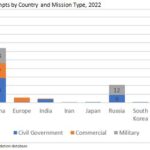
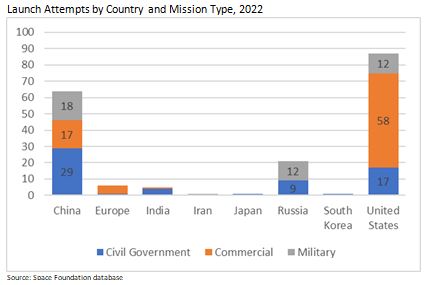
While the U.S. typically leads commercial satellite launches, China almost doubled its private missions in 2022—commercial payloads were 27% of the nation’s launches compared to 16% in 2021. Chang Guang Satellite Technology Co. launched five batches of high-resolution imagery satellites for its Jilin-1 constellation and has deployed approximately half of its planned 138 satellites.
The S-Network Space Index℠ 2022 Performance
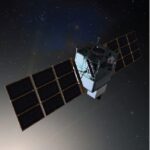
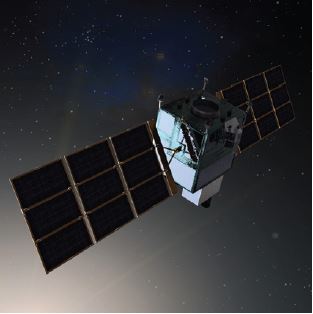
The S-Network Space Index℠ tracks a global portfolio of publicly traded companies that are active in space-related businesses such as satellite-based telecommunications; transmission of television and radio content via satellite . . .